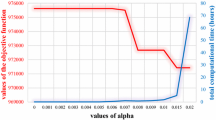Abstract
This paper studies a Pareto-improving and revenue-neutral congestion pricing scheme on a simple two-mode (highway and transit) network: this scheme aims at simultaneously improving system performance, making every individual user better off, and having zero total revenue. Different Pareto-improving situations are explored when a two-mode transportation system serves for travel groups with different value-of-time (VOT) distributions. Since the congestion pricing scheme suggested here charges transit users negative tolls and automobile users positive tolls, it can be considered as a proper way to implement congestion pricing and transit subsidy in one step, while offsetting the inequity for the poor. For a general VOT distribution of commuters, the condition of Pareto-improving is established, and the impact of the VOT distribution on solving the inequity issue is explored. For a uniform VOT distribution, we show that a Pareto-improving and revenue-neutral pricing scheme always exists for any target modal split pattern that reduces the total system travel time.
Similar content being viewed by others
References
Adler, J. L., & Cetin, M. (2001). A direct redistribution model of congestion pricing. Transportation Research, 35B, 447–460.
Bernstein, D. (1993) Congestion pricing with tolls and subsidies. In: Proceedings of the Pacific Rim Transportation Technology Conference, 2, 145–151.
Braeutigam, R. R. (1979). Optimal pricing with intermodal competition. American Economic Review, 69, 38–49.
Daniel, J. I. (2001). Distributional consequences of airport congestion pricing. Journal of Urban Economics, 50, 230–258.
DeCorla-Souza, P. (1995). Applying the cashing out approach to congestion pricing. Transportation Research Record, 1450, 34–37.
De Borger, B., Proost, S., & Wouters, S. (1996). Optimal pricing of urban passenger transport: a simulation exercise for Belgium. Journal of Transport Economics and Policy, 30, 31–54.
Eliasson, J. (2001). Road pricing with limited information and heterogeneous users: A successful case. Annals of Regional Science, 35, 595–604.
Goodwin, P. (1989). The rule of three: A possible solution to the political problem of competing objectives for road pricing. Traffic Engineering and Control, 30, 495–497.
Franklin, J. (2007). Decomposing the distributional effects of roadway tolls. 86th Annual Meeting of the Transportation Research Board, Washington, D.C., Conference CD. Paper No. 07–2991.
Jara-Diaz, S. R., & Tudela, A. (1993). Multiobjective pricing of integrated bus-subway services in Santiago, Chile. Journal of Advanced Transportation, 27, 259–275.
Kalmanje, S., & Kockelman, K. (2004). Credit-based congestion pricing: Travel, land value and welfare impacts. Transportation Research Record, 1864, 45–53.
Mayet, J., & Hansen, M. (2000). Congestion pricing with continuously distributed values of time. Journal of transport Economics and Policy, 34–3, 359–369.
Poole, R. W. (1992). Introducing congestion pricing on a new toll road. Transportation, 19, 383–396.
Sherman, R. (1971). Congestion interdependence and urban transit fares. Econometrica, 39–3, 565–576.
Small, K. A. (1983). The incidence of congestion tolls on urban highways. Journal of Urban Economics, 13, 90–111.
Small, K. (1992). Using the revenue from congestion pricing. Transportation, 19, 359–381.
Small, K. A. (2004). Road pricing and public transport. In: G. Santos (Ed.), Road pricing: Theory and evidence, research in transportation economics, (Vol. 9, pp. 133–158). Amsterdam: Elsevier Science.
Tabuchi, T. (1993). Bottleneck congestion and modal split. Journal of Urban Economics, 34, 414–431.
Yang, H., & Guo, X. L. (2005). Pareto-improving congestion pricing and revenue refunding schemes in traffic networks (working paper: WP-HKUST-YH-2005-08-04, available from: https://doi.org/ihome.ust.hk/~cehyang/).
Yang, H., & Huang, H. J. (2005). Mathematical and economic theory of road pricing. Amsterdam: Elsevier.
Yang, H., & Zhang, X. N. (2002). Multiclass network toll design problem with social and spatial inequity constraints. Journal of Transportation Engineering, 128, 420–428, ASCE.
Author information
Authors and Affiliations
Corresponding author
Rights and permissions
About this article
Cite this article
Liu, Y., Guo, X. & Yang, H. Pareto-improving and revenue-neutral congestion pricing schemes in two-mode traffic networks. Netnomics 10, 123–140 (2009). https://doi.org/10.1007/s11066-008-9018-x
Received:
Accepted:
Published:
Issue Date:
DOI: https://doi.org/10.1007/s11066-008-9018-x




